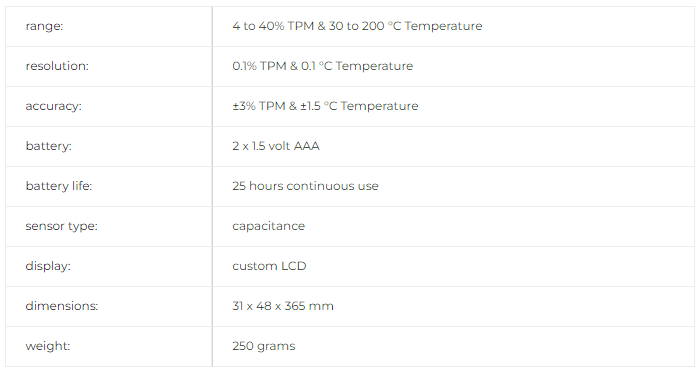7C, Jalan Uranus AJ U5/AJ,
Seksyen U5,
40150 Shah Alam,
Selangor, Malaysia.

| Previous | 12 / 65 | Next |

Lightweight and easy to use the deep-frying oil tester can simultaneously display the temperature of the frying oil and % TPM value. The % TPM value (total polar materials) enables the user to make a judgement on the ageing and quality of the cooking oil, which deteriorates over time due to the effects of heating.
Measurements are carried out directly in the hot cooking oil. The measuring tip of the probe is placed directly in to the hot fat frying oil, and quickly the user can establish the oil temperature and %TPM value.
The % TPM value is a measure of the thermal-oxidative stress level of a frying oil.
The Frying Oil Tester incorporates a simple to read LED traffic light function, which lets you know if the oil needs, or will soon need, changing. By only changing the oil when required, you can save money and time, as well as reducing waste.
Suitable for measuring olive oil, palm oil, rapeseed oil, peanut oil, soybean oil, sesame oil, vegetable oils and animal fats.
HOW IT WORKS:
ETIs digital frying oil tester & thermometer test the Total Polar Materials (TPM) of frying oils. TPM is measuring the amount of polar materials within the oil. A molecule is polar because the negatively charged electrons spinning around are not evenly distributed (odd number), whereas a non-polar molecule has evenly distributed (even number) electrons. As an example, water is a very polar material and oil is non-polar which means that water would separate from oil as seen in the below image (imagine magnets):

Triglycerides are also detected using TPM. These are compounds combined with 1 glycerol molecule and 3 fatty acids so are “larger” molucules than singular fatty acids that the test strips are detecting.
The digital tester measures the number of these “larger” polar molecules that appear in oil and provides a percentage of TPM (% TPM) on the LCD. 24% TPM is considered as the percentage level at which frying oil is no longer suitable for human consumption in the UK. This is done via a dielectric constant measurement between 2 capacitance plates.